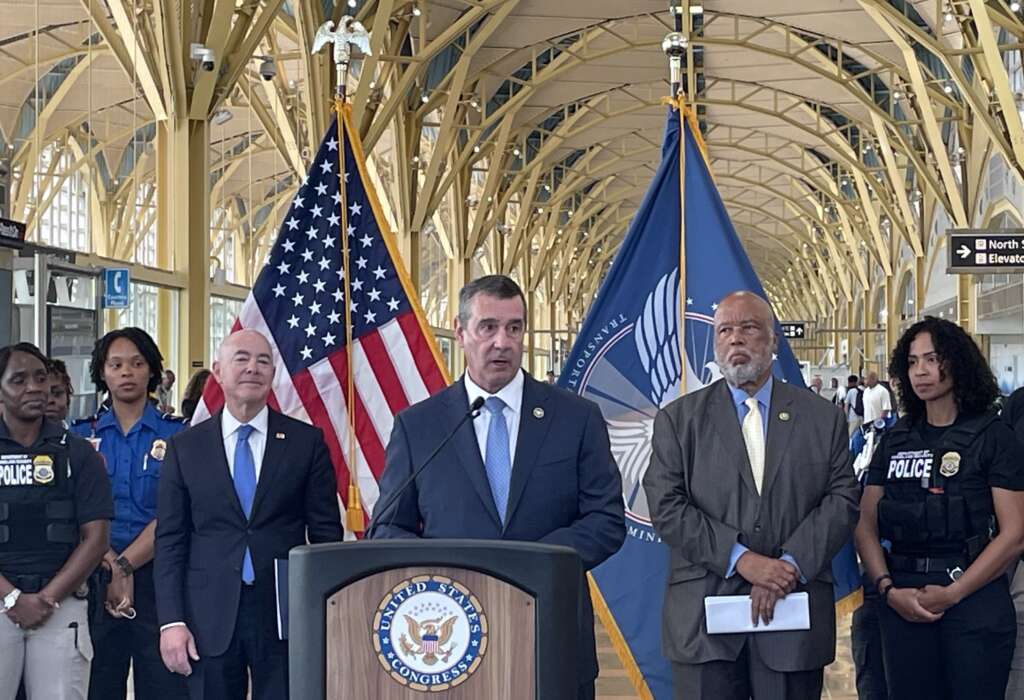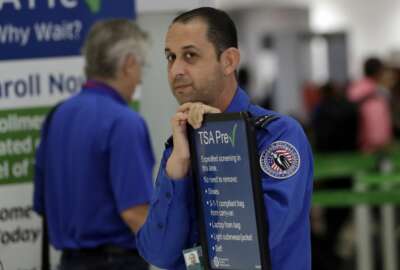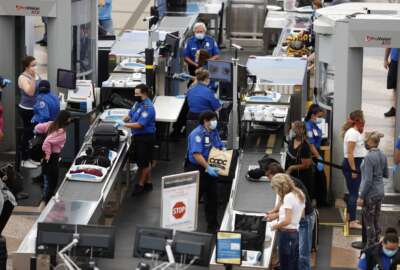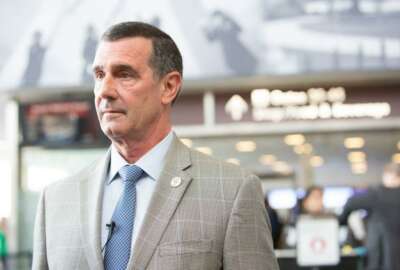‘Long overdue’ TSA pay raises bring salaries in line with rest of federal workforce
Airport screeners and other Transportation Security Administration employees have received a major pay increase to bring their salaries on par with the rest of the...
Airport screeners and other Transportation Security Administration employees have received a major pay increase to bring their salaries on par with the rest of the federal civilian workforce.
The new pay scale instituted by TSA this month mirrors the General Schedule wage system used across much of the rest of the federal government. The increases were funded under the homeland security appropriations bill passed by Congress late last year. It included funding for the pay raises starting in the fourth quarter of fiscal 2023.
Late last week and into the weekend, TSA employees received their first paychecks under the new system. Some TSA employees received as much as a 31% pay boost, officials said during a press conference at Ronald Reagan Washington National Airport today.
“That’s a hell of a pay increase for anybody, but it’s long overdue,” House Homeland Security Committee Ranking Member Bennie Thompson (D-Miss.) said.
Thompson has long been a proponent of bringing TSA under the same pay and personnel system as the rest of the federal government. When the agency was created in 2001, it was excluded from the Title 5 system. The result had been far lower pay for TSA employees compared to their counterparts across government.
“It was unfair, and frankly unconscionable that the more than 63,000 of these outstanding TSA public servants carried out their duties for more than 20 years, while being paid less than a government counterparts,” DHS Secretary Alejandro Mayorkas said. “It was antithetical to our values.”
Meanwhile, TSA and the American Federation of Government Employees are also in the midst of negotiating a full collective bargaining agreement in another step toward aligning the agency’s personnel system with the rest of the federal workforce.
“Pay fairness is an important milestone, but it is not a capstone,” Mayorkas said.
TSA Administrator David Pekoske said the pay raises are coming at a crucial time, as air travel surpasses pre-pandemic levels. TSA has traditionally struggled with low employee morale and high levels of turnover, with a 2019 blue ribbon panel finding pay is the “greatest issue” driving turnover at the agency.
“We would not have been able to be as successful as we have been this summer with record volumes of passenger travel through this airport, through [Baltimore Washington International] and through Dulles, through airports throughout the country, were it not for this pay increase,” Pekoske said.

Since last October, TSA has seen a 30% increase in the number of job applicants, he said, as well as a 61% reduction in attrition.
“What that means is we retain talent, we don’t have to recruit and spend the funds to do that, and that increases our overall experience base across the agency,” Pekoske said.
The new pay tables apply to non-executive employees across the agency, officials noted, including federal air marshals, canine handlers, explosives specialists, behavior detection specialists, cybersecurity experts and intelligence analysts, among others.
But the changes are most dramatic for the TSO screeners, who make up the bulk of the TSA workforce, start out at lower pay bands and have traditionally been some of the lowest paid employees in the federal government.
The raises for TSOs who have been with the agency for 20 years, for example, are generally “north of 30%,” Pekoske told Federal News Network.
“Basically, that counts for all of the regularly scheduled step increases in the General Schedule that you didn’t receive in our former pay system,” he said. “And so this was a huge catch-up for them, and really those are the individuals that have all the experience, all the leadership skills that we really want to retain.”
Brand new TSA employees, meanwhile, will generally see a 5-10% increase, Pekoske said. But the new system will allow them to move through TSA’s pay bands more quickly, depending on performance, allowing them to progress from the starting “D band” through to the “F band” over the course of five years, he added.
“That gives you automatic career progression,” Pekoske said. “What we find is once an employee joins TSA, if they spend more than a year with TSA, they’re likely to spend many, many more years after that. And so we need to make sure that we show a path for increased responsibility and increased pay that goes along with it.”
Uncertainty around funding in 2024
Meanwhile, Thompson pledged to ensure there is continued funding for the new salary structure into fiscal 2024 and beyond.
The GOP-led House Appropriations Committee’s version of the fiscal 2024 spending bill would strip back the pay raises for non-TSO employees. Pekoske came out against that proposal during a House Homeland Security Committee hearing earlier this month.
“Now we have the money, we need to make sure it stays there,” Thompson said today. “Over the next few months, we will be making sure that this is just not a one-off kind of thing. I’m not aware of any raise that’s been taken back from employees in our government. And we’ll make sure that that doesn’t happen in this situation.”
Lawmakers are also quickly running out of time to come to pass the fiscal 2024 appropriations bill before fiscal 2023 ends on Sept. 30.
In the event Congress uses a continuing resolution to lock in prior-year spending levels after Sept. 30, Pekoske said TSA would likely seek what’s called an “anomaly,” or a provision in the CR that carves out funding for the agency to continue to implement the new pay system.
“A lot depends on how long the CR goes for, because we only have funds in our appropriation for one quarter’s worth of pay for everybody,” he said.
And while TSA’s pay system still sits outside the General Schedule, Pekoske said the agency will continue to budget so its pay scale keeps pace with the rest of the federal workforce in the years ahead.
“We’re trying to lock right to it,” Pekoske said.
Copyright © 2025 Federal News Network. All rights reserved. This website is not intended for users located within the European Economic Area.
Follow @jdoubledayWFED






